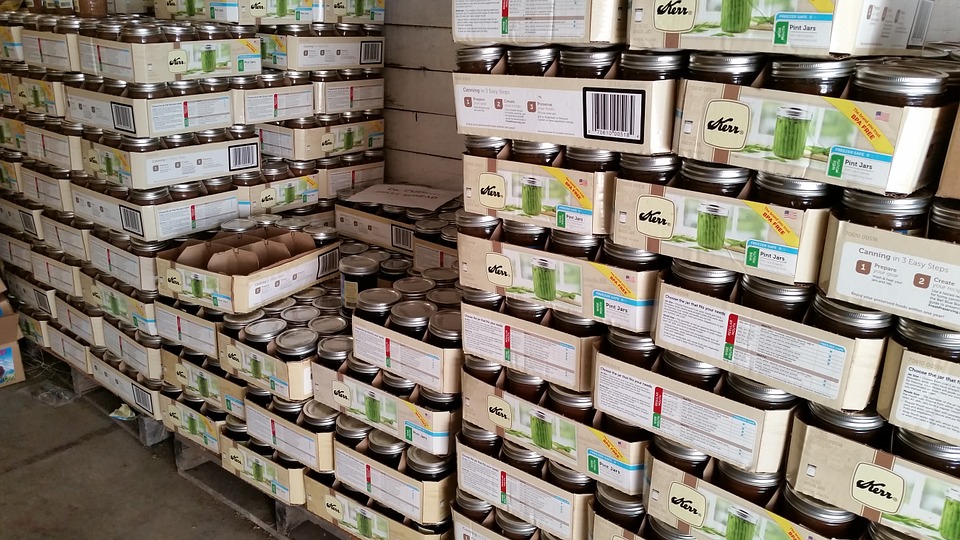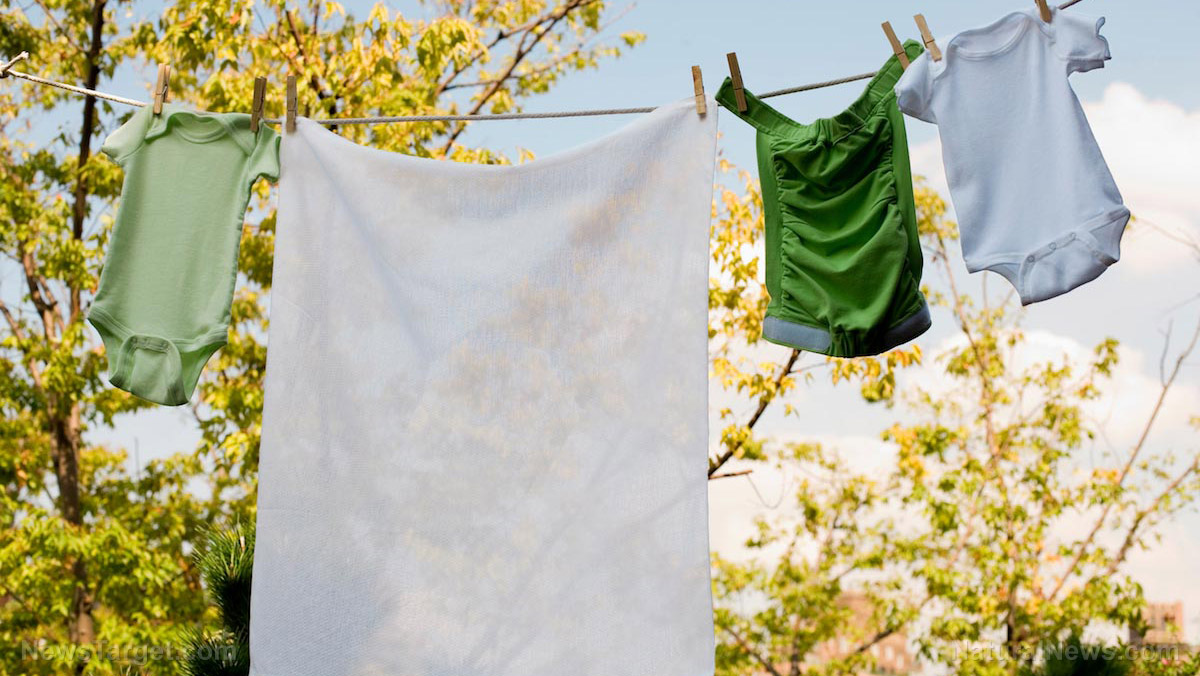Home security for preppers: Design your landscape strategically and grow defensive plants for your protection
08/17/2022 / By Zoey Sky

There are many ways to improve your home security, such as installing CCTV cameras and a home security system.
But did you know that growing certain plants, especially those known as defensive plants, can also help secure your home and protect your family when SHTF? (h/t to SHTFBlog.com)
If you want to improve your home security, consider making changes to your landscape by planting prickly pear or plants with thorns and other useful features to deter thieves and intruders.
Compared to measures like cameras, firearms or a guard dog, landscaping is a more passive means of keeping your home safe. Landscaping for home defense requires some hard work, but if you do it properly, it can also beautify your home and add value to your property.
Gardening and landscaping tips
Know your area’s grow zone
For your landscaping to be successful, you need to first confirm which specific plants will grow in your region. The U.S. is divided into different gardening “zones.”
Once you find out what zone you live in, you can select plants that have been rated to flourish within that particular zone.
Check soil quality
It also helps to check the quality of your soil. This will help you determine which plants, shrubs and trees are best suited to your land along with any amendments you might need.
Do this by getting a soil test kit online.
Using defensive plants in your yard
If landscaping for home security is overwhelming, here are some basic landscaping principles that will help you effectively protect your home via landscaping.
Don’t plant things too close to your house if they will cause problems
Don’t plant something that might grow too much like a mesquite tree right next to your house because it might cause issues with your plumbing if you live in the city. The tree can grow to magnificent proportions and the biggest one in Texas has a trunk almost six feet in diameter, stands 56 feet tall and has an 87-foot crown.
Mesquite tap roots have been found as deep as 200 feet below the surface and the surface roots may extend 50 feet or more past the outer edge of the crown, which can also cause problems with your foundation.
You also shouldn’t plant things that can harm people walking on your sidewalks. You can plant something with thorns underneath your first-story windows, but not on both sides of your sidewalk. (Related: Home security tips: Top 12 defensive plants that can help deter trespassers.)
Plan for future plant growth
Don’t make the mistake of not accounting for future growth when landscaping because this can cause problems in the future.
It’s normal to have too much space within the first year or two after planting. After all, your plants still have a lot of growing to do.
Direct the movement on your property
Home security landscaping allows you to direct the flow of movement around your property. This means if you don’t want anyone to reach your property from a certain area, place certain plants there to keep anybody from doing so.
Defensive plants that will help beef up your home security
Here are defensive plants to place on your property to keep intruders out and protect your loved ones.
Agave (A. Americana), Zones 8-11
Agave has thick, fleshy leaves and it looks like a giant aloe vera. It has large spikes at the end of each leaf that make it a great choice for home security landscaping.
One agave plant is easy to avoid, but if you lace them together or use other “security” landscaping choices, they will act as an effective deterrent.
Apple cactus (C. peruvianus), Zones 8-11
Apple cacti enjoy full sun and need soil that will drain easily. An apple cactus can grow as large as a tree. Like agave, apple cactus has very sharp spines.
Barberry (B. thunbergia/B. julianae), Zones 4-8
Barberry is hardy and prickly. There are several varieties of barberry so choose one with thorns.
Use barberry shrubs to create a living, thorny hedge that will keep out trespassers. Note that many types of barberries are invasive (and potentially illegal) where you live.
Barrel cactus (Echinocactus/Ferocactus), Zones 9-11
Barrel cactus or mother-in-law’s seat comes in many varieties.
The Echinocactus genus is known for its fuzzy spikes and the Ferocactus genus has fiercer-looking spikes.
Blackberry (R. fruticosus), Zones 5-11
Blackberries usually form an impenetrable mess of thorny canes along forest edges. Use this feature to your advantage.
Choose a spot carefully because blackberries can easily become invasive and they won’t always spread where you want them to appear.
Blackthorn (P. spinosa), Zones 4-8
Blackthorn is covered in two-inch long spikes that may cause painful injuries. The tips of these spikes will often penetrate skin and then break off, sometimes causing infections.
Bougainvillea (B. glabra/B. spectabilis), Zones 9+
Bougainvillea is a thorny vine with beautiful flowers in a wide variety of colors, depending on the variant.
Bougainvillea needs plenty of water and very well-draining soil. Skip this plant if you live in a more northern climate since it will not do well.
California fuchsia (R. speciosum), Zones 8-10
California fuchsia is a small, deciduous shrub that thrives in full to partial sun in soil with good drainage. They don’t need too much since they are very drought-resistant.
California fuchsia has three-inch-long thorns scattered throughout the growth.
Chinese jujube (Z. jujuba), Zones 5-11
Chinese jujube is a spiky Chinese tree with thorny variants that bear edible fruits. The plant favors sandy, well-drained soil and it can tolerate an array of temperatures.
Chinese jujube will produce about 100 pounds of fruit a year. It’s relatively easy to grow, but you need to prune it regularly or it won’t put out new spiky growth.
Cholla cactus (C. bigelovii), Zones 8 and up
Cholla cactus is native to Mexico and the plant is full of “fingers” covered in spikes.
Desert spoons (D. wheeleri), Zones 8-11
Desert spoons grow in the desert, but despite the name, they don’t look like spoons. Instead, they look like agave plants with smaller leaves and more spiky ends.
Desert spoon favors sandy soil that drains easily and the plant has “teeth” that will hurt anyone who gets too close to them.
Gooseberry (R. hirtellum/R. uva-crispa), Zones 3-8
Gooseberry produces berries that can be used to make jellies and pies.
The plant is covered in thin, little thorns. They are easy to maintain, but you need to protect yourself with long sleeves and gloves if you want to prune or pick berries.
Gooseberry enjoys full or partial shade, but it doesn’t like scorching temperatures. If you live somewhere with lots of white pines, check local laws before you purchase gooseberry plants because they contribute to a disease called white pine blister rust that kills white pines.
Hardy orange (P. trifoliata), Zones 6 and up
Hardy orange or trifoliate orange is a Chinese native that produces fruits similar to lemons.
Commonly planted as an ornamental, every branch on a hardy orange is coated in two-inch thorns. Note that the plant will lose its leaves in winter, but it is drought-resistant.
Prickly pear (Opuntia), Zones 4-11
Prickly pear is common in landscapes in the U.S., making it a popular choice for home security landscaping. The cactus has spikes common in most cacti along with very fine hair-like spines called glochids that are just as painful.
Prickly pear requires full sun and well-drained soil, but they might survive in clay soils.
Yucca, Zones 8-11
Yuccas are native to the arid regions of the U.S. so they like full sun and well-draining soil. It is also similar to agave, with large leaves that have spikes at the end.
The edge of yucca leaves is very sharp and can easily cut exposed skin.
Defensive landscaping is a passive method of home security and it’s best to use it as a complement to other measures like a guard dog or a security system. Once you confirm which plants, bushes or cacti grow in your zone, make changes to your garden to protect your home and family.
Visit Preparedness.news for more tips on home security.
Watch the video below for tips on how to defend your home and neighborhood during societal collapse.
This video is from The David Knight Show channel on Brighteon.com.
More related stories:
Home security: 3 Ways to protect your homestead.
Home defense plays important role in survival after SHTF.
Protect your property with these natural and man-made barriers, fences and fortifications.
Sources include:
Submit a correction >>
Tagged Under:
defensive landscaping, defensive plants, Home Defense, home gardening, home security, homesteading, off grid, Plants, preparedness, prepper, prepping, SHTF, survival, Survival Tips
This article may contain statements that reflect the opinion of the author
RECENT NEWS & ARTICLES
COPYRIGHT © 2017 PREPAREDNESS NEWS




















